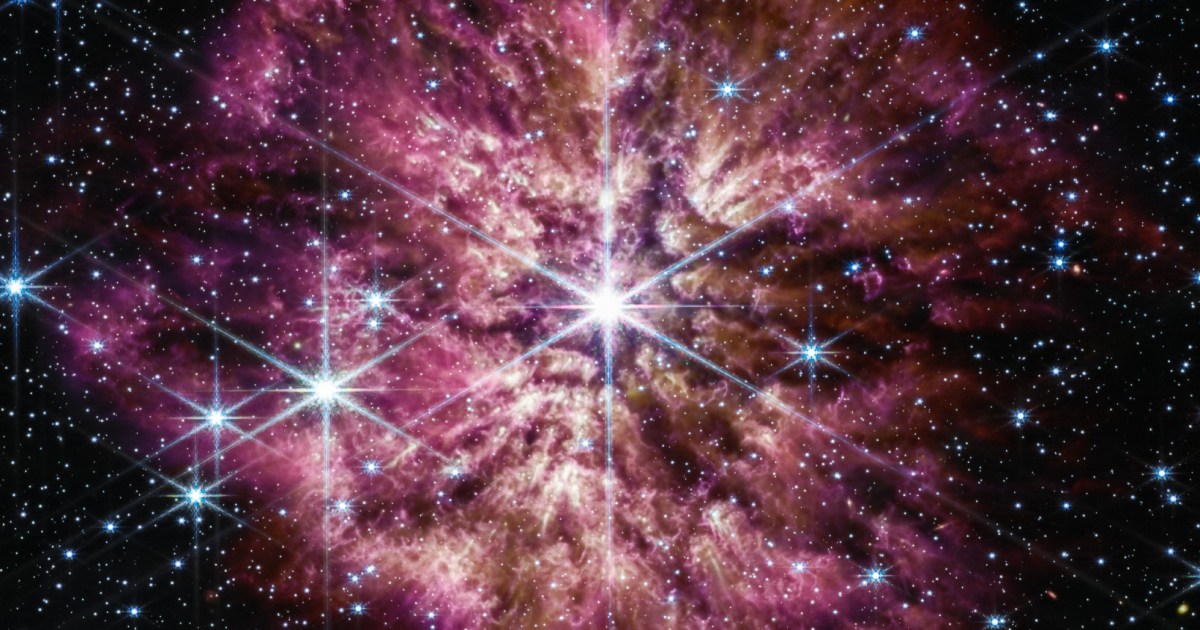Astronomers have known for nearly a century that our Universe is expanding. For decades, scientists expected this expansion to be slowing down due to the force of gravity. However, that all changed in the 1990s when astronomers realized that not only is the Universe expanding, but it’s doing so at an accelerating rate, like a runaway train on a downward slope. The Universe is literally blowing itself apart.
The culprit for this expansion is a phenomenon called dark energy. This invisible and undetectable substance is effectively a form of antigravity, pushing distant galaxies apart and making empty space ever emptier. While the scientific community is confident that dark energy exists, this energy is very weak — equivalent to just a couple of protons per cubic meter — and determining its properties is very difficult. But after a decade of effort, astronomers have just released a very precise measurement of the amount of dark energy as it has existed over the last 9 billion years.
The Dark Energy Survey
The Dark Energy Survey (DES) is a collaboration of astronomers who used a powerful telescope in Chile to scan about an eighth of the sky, looking for supernovas. A supernova is the explosion of a star that leads to a flash so bright that it can be seen for billions of light-years. While there are a couple of different kinds of supernovae, a specific kind — called an “SN-Ia” — is very special. SN-Ia supernovae are all very similar, meaning they all generate about the same amount of light. Given that more distant objects appear dimmer than nearby ones, astronomers can compare how bright a supernova appears in their telescope to its original brightness and use that information to determine how far away the supernova is from Earth.
Given that light travels at a fixed speed, knowing how far away something is tells us how old it is. After all, light from more distant objects takes longer to get to Earth. So, by looking at ever more distant objects, astronomers effectively have a time machine. Nearby galaxies tell us about the expansion of the Universe now, while distant objects tell us what happened in the very distant past.
Astronomers can also image the galaxies in which these supernovae occur to determine the spectrum of light they emit. Because of the Doppler effect, galaxies that are moving away from Earth will appear redder than if they were stationary, with the amount of redness being related to the galaxies’ speed. (The Doppler effect mentioned here is the visual equivalent of the change of a train whistle’s pitch as the train goes by you.)
Scientists can combine the measurement of the distance and the measurement of the velocity to work out the expansion history of the Universe — this is how the original observation of the accelerating expansion of the Universe was accomplished back in 1998.
The original measurement used a mere 52 supernovae to make their discovery. Recently, DES used about 1,500 supernovae for their new measurement. The team also used advanced AI techniques to make sure that the supernovae it was looking at were the desired SN-Ia type. This result is a huge advance in the understanding of dark energy.
The density of dark energy
Scientists have long known that dark energy currently constitutes about two-thirds of the energy in the Universe. It remains an open question whether this ratio is a constant. And it’s here that the situation gets complicated. According to the currently accepted theory of the Universe, what is constant is the density of dark energy. As the volume of the Universe increases, the fraction of the universe made up of dark energy increases.
Previous measurements suggest that the density of dark energy is constant, but those early measurements had some uncertainty associated with them, leading to uncertainty in our understanding of the evolution of the Universe. Precisely determining the density of dark energy would have profound consequences on cosmological theories.
If the density of dark energy in the Universe is constant, a parameter of the theory represented by the letter w should equal negative one (w = -1). When DES scientists used their data to measure the parameter, they found a value of (w = -0.80), but with an uncertainty ranging from -0.66 to -0.96. The discrepancy between prediction and measurement is about the same size as the uncertainty, meaning that dark energy density could be constant.
DES is not the only group looking at the amount of dark energy. When they combined their measurements with earlier ones by the Planck group, the combined result was more precise: w = -0.955, with an uncertainty range of -0.923 to -0.992.
The bottom line is that the measurement is very close to prediction, leading scientists to conclude that dark energy density is probably constant, but the tiny residual discrepancy means that they are not completely certain. They will continue to look at their data and combine other measurements to refine their result.
The dark energy density is one of the most important parameters in terms of predicting the future evolution of the cosmos: whether the expansion will continue to accelerate like it has been or whether the acceleration will slow down or speed up. Future measurements, like those planned at the Vera C. Rubin Observatory will help nail down this important measurement.
This article Astronomers use AI to shed light on dark energy is featured on Big Think.

The post “Astronomers use AI to shed light on dark energy” by Don Lincoln was published on 01/08/2024 by bigthink.com




































